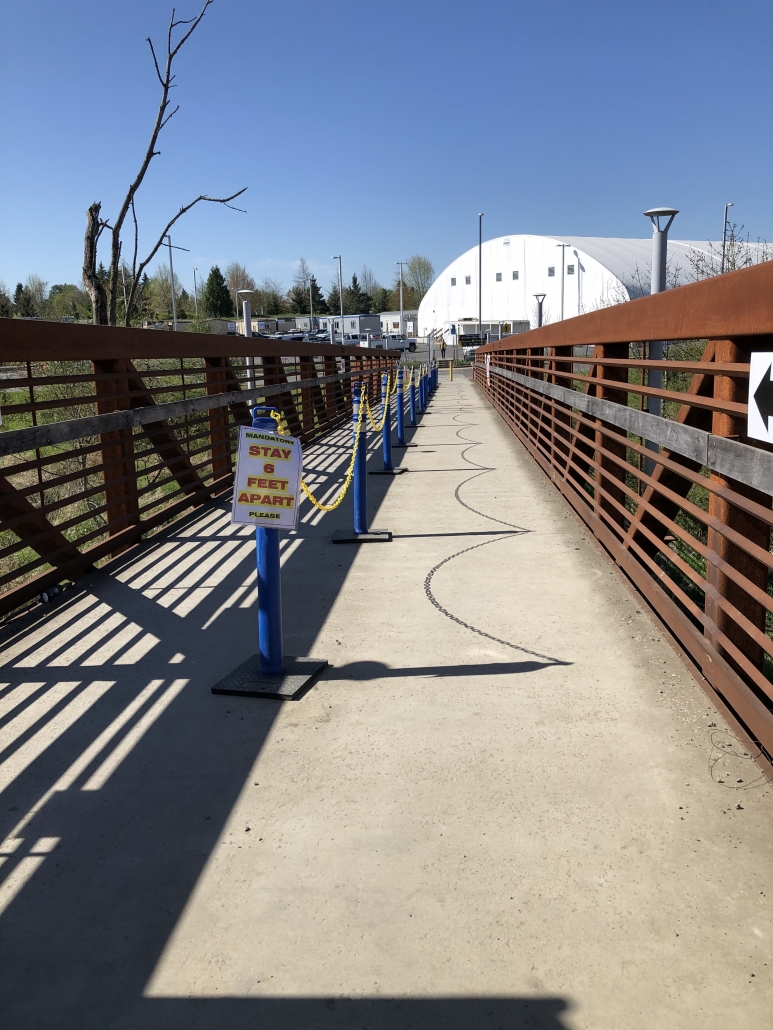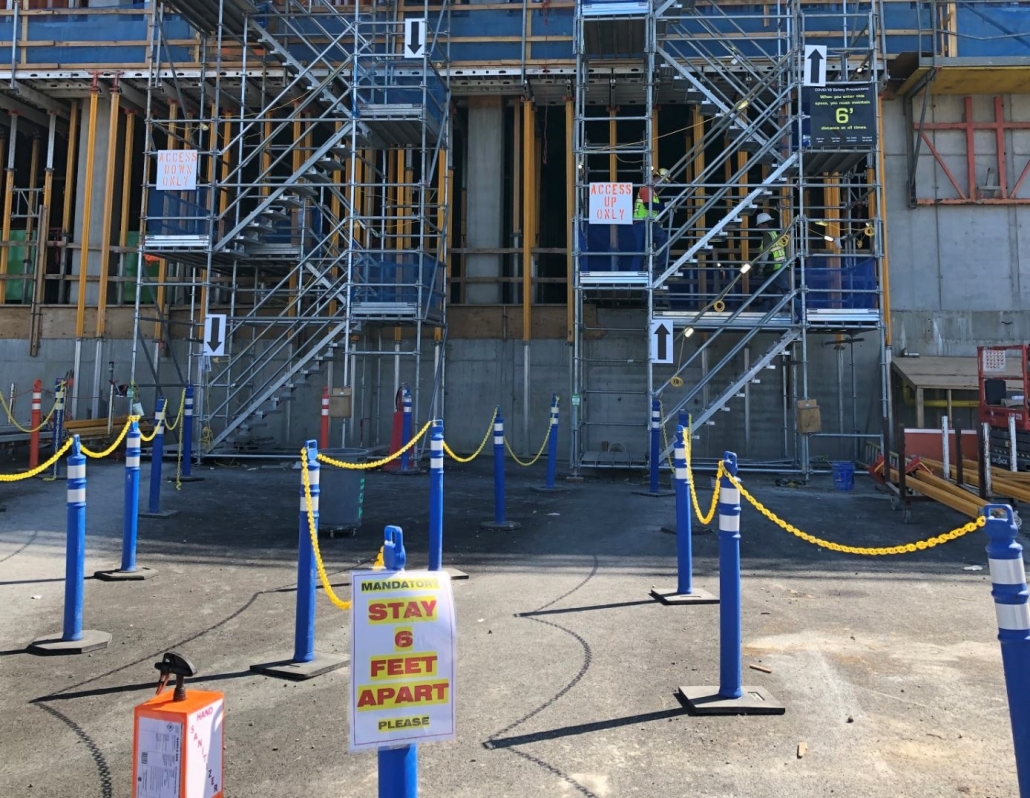Control: Adjust work/meeting areas to maintain minimum 6ft between workers

Practicing social distancing during a training session
Description:
Boart Longyear Drilling Services mechanics practicing social distancing during a training session.
Photo credit: Alex Beseris
Source: Boart Longyear
Date: 09/19/20
COVID-19 Exposure Control Planning Tool
Description:
The CDC and OSHA recommend that companies develop a plan to protect their employees and prevent the spread of COVID-19. This free planning tool is designed to help users develop a plan for their worksite in 4 steps. Now in a soft launch, feedback is welcome - email covid19@cpwr.com.
Source: CPWR - The Center for Construction Research and Training
Date: 09/11/20

Sani-Cans (porta johns) positioned 6 feet apart with wash stations
Description:
Spread porta johns out to increase the physical distance between workers and provide easy access to hand washing or hand sanitizer stations to encourage hand hygiene.
Source: Oregon State Building Trades Council
Date: 08/28/20

Signs indicate walking paths to maintain social distancing
Description:
Signage and segregated walk paths reduce two-way traffic on narrow paths, such as a bridge.
Source: Oregon State Building Trades Council
Date: 09/11/20

Adjust work to maintain social distancing - wall crew
Description:
This work layout and assignment of tasks creates a physical distance between workers.
Source: Oregon State Building Trades Council
Date: 08/28/20

Signage, stair tower segregation and hand sanitizer stations
Description:
Signs, barriers, and segregated stair towers used to maintain social distancing and reduce two-way traffic in stairwells. Hand sanitizer stations placed in a high traffic area encourages hand sanitizing.
Source: Oregon State Building Trades Council
Date: 08/28/20

Signage and segregated walk path
Description:
Signs and segregated walk paths remind workers to stay 6 feet apart.
Source: Oregon State Building Trades Council
Date: 08/28/20
LHSFNA - Social Distancing Protocol for Construction Jobsites to Help Prevent the Spread of Novel Coronavirus Disease (COVID-19)
Description:
Sample social distancing policy statement.
Source: Laborers' Health and Safety Fund of North America (LHSFNA)
Date: 08/28/20